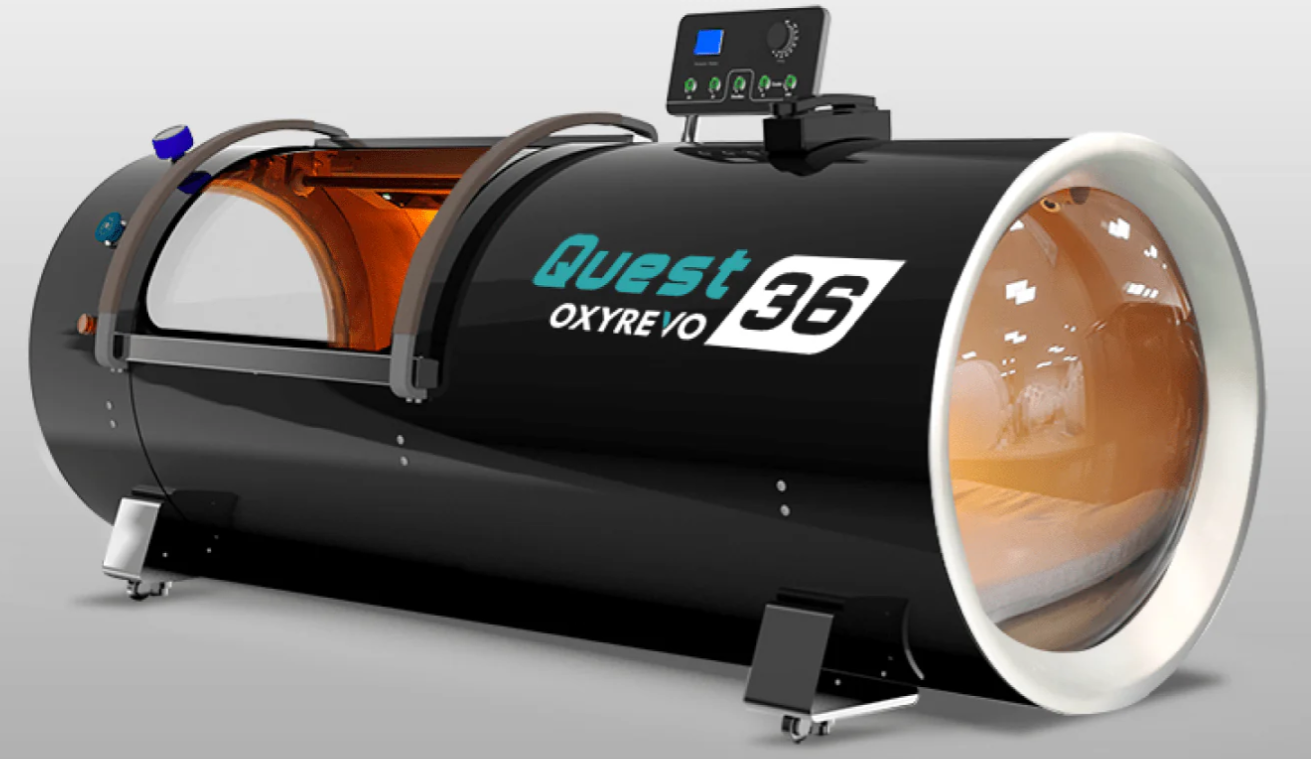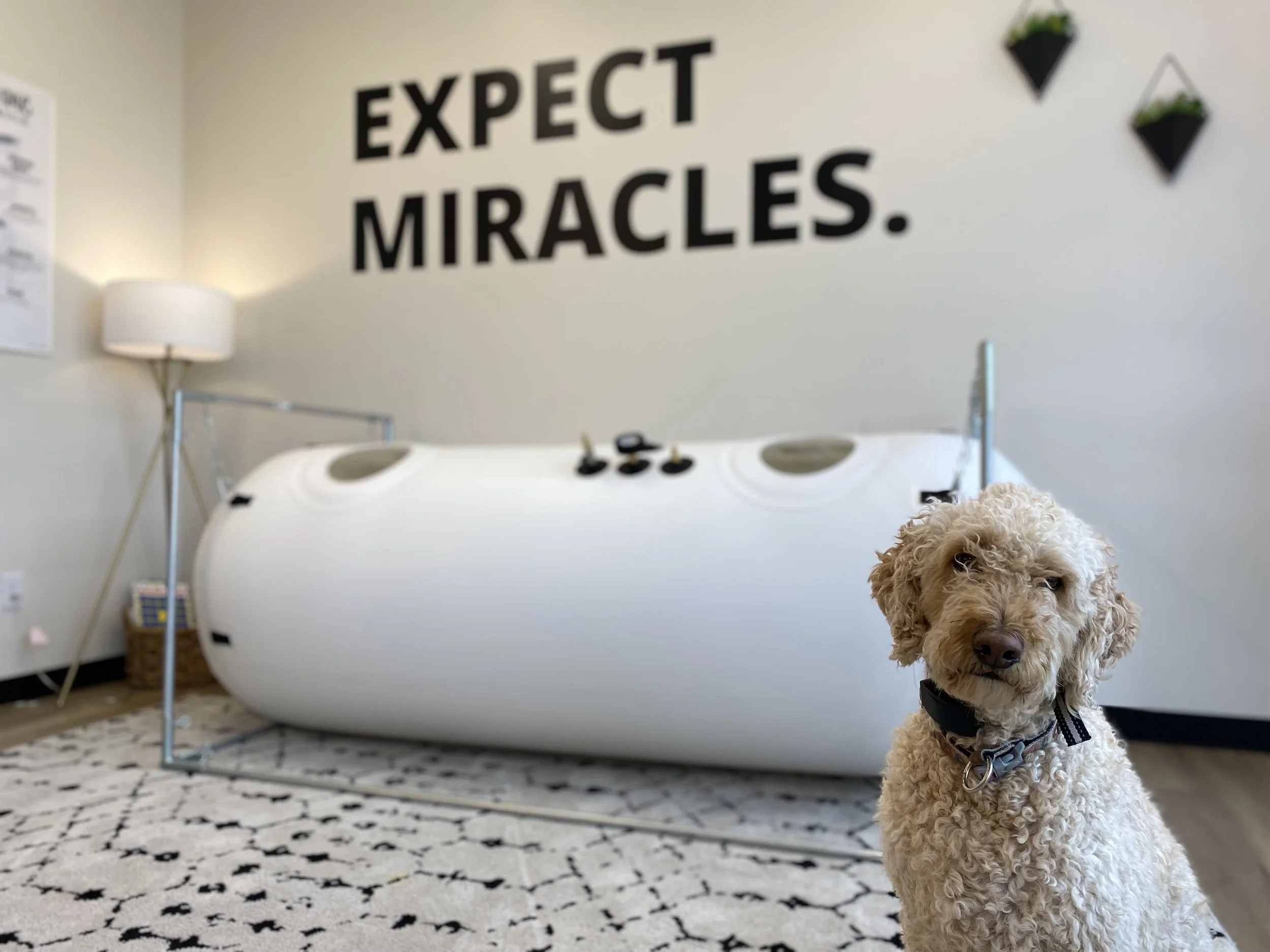How Often Should You Receive Hyperbaric Oxygen Therapy for Optimal Results?
Hyperbaric oxygen therapy (HBOT) is an innovative treatment with an impressive range of applications, from accelerating wound healing to enhancing cognitive function. However, to maximize its benefits, it’s essential to understand the optimal frequency and duration of treatment. This blog explores everything you need to know about HBOT, from the basics to how often you should schedule sessions for your specific needs.
Key Takeaways
Versatile Healing Benefits: HBOT accelerates recovery for various medical conditions, including chronic wounds, traumatic brain injuries, and carbon monoxide poisoning, while also supporting overall wellness.
Tailored Treatment Plans: The frequency and duration of HBOT sessions depend on individual goals, with protocols ranging from a few sessions for acute issues to 20–40 for chronic conditions.
Safe and Effective: HBOT is a non-invasive, low-risk therapy monitored by professionals, with minimal side effects like ear discomfort or fatigue.
Importance of Qualified Providers: Choosing a certified and experienced HBOT provider ensures a safe and comfortable treatment experience.
Introduction to Hyperbaric Oxygen Therapy
Hyperbaric oxygen therapy (HBOT) is a medical treatment that involves breathing 96-100% oxygen in a specially designed pressurized chamber. This process increases the amount of oxygen carried by the blood, enabling it to reach damaged tissues and promote faster healing.
Initially developed to treat decompression sickness in divers, HBOT has since expanded to address various conditions, including carbon monoxide poisoning, chronic wounds, and traumatic brain injuries. It’s also used by athletes and wellness enthusiasts to enhance recovery and overall performance.
In our physicians’ experience, HBOT is a safe, non-invasive treatment option with minimal risks, making it an accessible choice for patients seeking a natural way to boost healing and recovery.
Benefits and Applications of HBOT
The benefits of HBOT extend far beyond its original uses. By saturating the blood with oxygen, it creates an environment that supports tissue regeneration, reduces inflammation, and improves circulation.
For medical purposes, HBOT is widely used to treat conditions such as decompression sickness, carbon monoxide poisoning, and non-healing wounds like diabetic ulcers. It can also aid in recovery from radiation therapy injuries and surgical procedures.
Beyond medical applications, HBOT is increasingly used for general wellness and performance optimization. Athletes turn to it for faster recovery from injuries, while others seek cognitive improvements or relief from chronic conditions like fibromyalgia and chronic fatigue syndrome.
With its ability to address both acute and chronic issues, HBOT has become a versatile tool in modern medicine and wellness care.
Factors Influencing HBOT Frequency
The frequency of HBOT sessions is not a one-size-fits-all formula. Several factors influence how often treatment is recommended, including the medical condition, its severity, and the patient’s overall health.
For acute conditions, such as carbon monoxide poisoning, daily sessions over a short period may be required. Chronic conditions like radiation injuries or diabetic wounds may need 20 to 40 sessions spread over several weeks.
Treatment goals also play a role. Whether the focus is on rapid recovery or long-term wellness, healthcare providers tailor treatment plans to align with individual needs. Practical considerations like a patient’s schedule and lifestyle may also affect the frequency of sessions.
General HBOT Session Details
Each HBOT session typically lasts between 60 and 120 minutes. During treatment, the patient enters a pressurized chamber and breathes pure oxygen. The process is painless and non-invasive, with modern chambers designed to ensure comfort.
Patients may feel slight pressure in their ears as the chamber pressurizes, similar to what occurs during airplane travel. This discomfort is temporary and easily managed by swallowing or yawning.
At Clarity Hyperbarics, our healthcare providers are always present to monitor the patient, answer questions, and ensure safety. Many patients use the time to relax, read, or listen to music while the therapy works its magic.
What to Expect During and After HBOT
Before starting HBOT, our healthcare providers will assess the patient’s condition and create a personalized treatment plan. Once in the chamber, the patient will sit or lie comfortably as the oxygen-rich environment stimulates healing.
After the session, patients may feel slightly tired or hungry, but this does not interfere with regular activities. Some patients notice immediate benefits, while others experience gradual improvements over time.
Treatment Frequency and Duration
Treatment schedules vary widely based on individual needs. For some conditions, daily sessions are essential, while others may only require a few sessions per week. Wellness-focused treatments are often less frequent, with sessions spaced out weekly or monthly.
Our healthcare providers determine the schedule, ensuring it aligns with the patient’s health goals and progress during therapy. This tailored approach allows for flexibility while optimizing results.
The total number of HBOT sessions depends on the condition being treated. Acute conditions may resolve in just a few sessions, while chronic or severe issues may require 20 to 40 treatments or more.
Each session lasts between 1 and 2 hours, with the entire treatment plan spanning days, weeks, or even months. Regular evaluations ensure that the therapy remains effective and adjustments are made as needed.
Examples of HBOT Frequency for Common Conditions
The frequency of HBOT sessions varies based on the condition being treated and individual patient needs. For athletic recovery, HBOT is often used to speed up healing from injuries, reduce muscle soreness, and improve overall performance. Treatment plans typically include 5 to 10 sessions over one to two weeks, depending on the intensity of the athlete’s training or injury. The therapy helps optimize oxygen delivery to tissues, which promotes faster recovery and reduces downtime.
After surgery, HBOT is frequently used to accelerate healing and minimize the risk of infection. In these cases, daily sessions for one to two weeks are common. The therapy helps by increasing oxygen levels in tissues, reducing swelling, and promoting faster recovery, particularly for complex surgical procedures or slow-healing wounds.
For managing inflammation, such as in chronic pain or autoimmune conditions, HBOT protocols typically include 10 to 20 sessions spread over several weeks. The frequency and duration of treatments depend on the severity of the inflammation and the patient’s overall health. The goal is to reduce inflammation, improve circulation, and enhance the body’s natural healing processes.
In cases of traumatic brain injury (TBI), treatment schedules are usually more intensive. Patients often require 40 or more sessions, conducted five times per week. These sessions are designed to improve cognitive function, reduce neurological inflammation, and address long-term damage caused by the injury. Each plan is tailored to the patient’s progress and specific recovery goals.
Risks and Side Effects of HBOT
HBOT is generally safe, but mild side effects like ear discomfort or fatigue may occur. Rare complications include oxygen toxicity or barotrauma, though these risks are minimized through proper monitoring.
Patients prone to anxiety may find the enclosed chamber uncomfortable, but providers offer solutions to ease this concern. Strict safety protocols, especially regarding the oxygen-rich environment, ensure a safe experience for all patients.
Preparing for HBOT
Proper preparation is key to a successful HBOT session. Patients should discuss their medical history, medications, and implants with their healthcare provider, like our team of physicians at Clarity Hyperbarics. Removing all metal objects and electronic devices is essential for safety.
Patients typically change into a hospital gown to avoid introducing flammable materials into the chamber. Bringing a small bottle of water may be allowed, but other personal items are restricted.
Finding a Qualified HBOT Provider
Choosing the right provider is crucial to ensuring a safe and effective HBOT experience. At Clarity Hyperbarics, we specialize in treating a wide range of conditions, offering state-of-the-art chambers designed for maximum comfort and safety. Our experienced team tailors each treatment plan to your specific needs, prioritizing your health and well-being. When it comes to hyperbaric oxygen therapy, trust Clarity Hyperbarics to provide the highest standard of care.
Summary
Hyperbaric oxygen therapy is a powerful tool for healing, recovery, and wellness. By understanding the factors that influence treatment schedules, the number of sessions needed, and the potential risks, patients can make informed decisions about their care.
Working closely with a qualified HBOT provider ensures a safe and effective experience tailored to individual needs. Whether addressing a medical condition or enhancing overall health, HBOT offers a versatile and proven path to optimal results.





